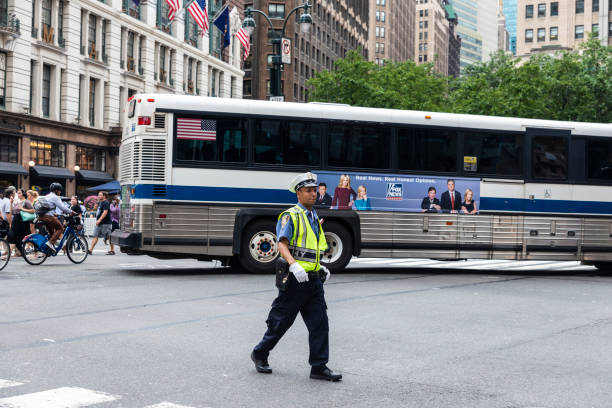Bus transportation is a cornerstone of urban and intercity travel, providing an essential service to commuters, tourists, and students. However, its heavy reliance makes any bus incident a critical concern for public safety. Although bus travel is usually safe, the National Highway Traffic Safety Administration points out that accidents can have severe repercussions because of the size of the vehicles and the number of passengers involved. Recent statistics indicate that while there has been progress in bus safety measures, significant risks remain, underscoring the need for continued vigilance and improved safety protocols.
Common Causes of Bus Accidents
Bus accidents can result from a variety of interconnected factors. Human error is a primary cause, mainly due to distracted or fatigued driving. Although mechanical failures are rare due to strict maintenance standards, they can lead to disastrous outcomes, such as brake failures or tire blowouts, when they happen. In such situations, it is advisable to hire a bus accident lawyer. Moreover, buses are not immune to unpredictable weather and road conditions, with ice, snow, and rain increasing the risk of accidents. Poorly designed roadways and inadequate traffic control can further exacerbate these dangers, adding another layer to the already complicated nature of bus travel safety.
Rights of Passengers and Pedestrians in Bus Accidents
Passengers and onlookers may feel defenseless and unsure of their legal rights after a bus accident. Understanding these rights is crucial, as it can influence the support and compensation one may receive. Passengers have the right to expect a safe journey because bus operators assume a heightened responsibility known as standard carrier status. This legal concept means operators must exercise high care towards their passengers. Similarly, pedestrians are covered by traffic regulations and can pursue damages for injuries they have suffered in the event of a breach of duty of care.
Key Steps to Take Following a Bus Accident
The chaos following a bus accident can be overwhelming. The priority is always to ensure personal safety and that of those around you. Once immediate dangers are addressed, the focus must shift to preserving evidence and understanding the situation. It is advisable to document everything possible, including taking photographs, noting the time and location, and obtaining contact information for witnesses. These first steps are essential for any future legal actions or insurance claims. Moreover, seeking immediate medical attention is paramount, as some injuries may not present symptoms immediately and can worsen without treatment.
Navigating the Complexities of Bus Accident Claims
Proceeding with a bus accident claim can be fraught with complexity. Dealing with multiple insurance carriers, understanding policy limits, and identifying all liable parties are some obstacles that may emerge. Victims often face a formidable challenge when seeking fair compensation, as insurance companies are adept at minimizing payouts. The intricacies of proving negligence and liability become even more pronounced, necessitating a thorough understanding of the law or the guidance of someone who does.
The Importance of Legal Representation in Bus Accident Cases
The complications of bus accident claims often necessitate specialized legal knowledge. An attorney in this field understands these cases’ unique challenges, from interpreting local traffic laws to navigating the multi-layered insurance frameworks.
Without a lawyer, insurance adjusters might try to settle your claim for less than you deserve. Legal guidance can ensure you get a fair outcome. By hiring a bus accident lawyer, victims stand a better chance of receiving fair compensation, reflecting the full extent of their losses.
Comparative Negligence and Its Impact on Bus Accident Claims
One of the more complex legal concepts in accident claims is comparative negligence. This principle assesses the degree of fault among all parties involved, which can significantly affect the outcome of a compensation claim. States vary in their approach to comparative negligence, with some reducing compensation based on one’s level of fault, while others may bar recovery if the fault exceeds a certain threshold. Understanding how these laws apply to a specific case is critical, as it can dramatically alter the potential for recovery.
Bus Accident Litigation: Trials Vs. Settlements
When seeking justice in a bus accident case, claimants often decide to accept a settlement offer or proceed to trial. Both paths have their merits; settlements can provide quicker financial relief and a guaranteed outcome, while trials may result in more prominent awards, though they come with the risk of unfavorable verdicts. Legal counsel can assess the strength of a case, guiding claimants through the strategic considerations necessary to make informed decisions. The unpredictability and stress of court proceedings contrast with the relative predictability of settlement negotiations, illustrating the need for skilled negotiation and litigation tactics.
State and Federal Regulations Governing Bus Operations
Numerous state and federal rules protect public and passenger safety aboard buses. These laws cover many operational aspects, including driver qualifications, vehicle maintenance, and service hours. Regulations are set forth by regulatory authorities like the Federal Motor Carrier Safety Administration (FMCSA), and breaking them can have serious legal repercussions in addition to endangering safety. A deep understanding of these regulations is fundamental to establishing liability and negligence in bus accident cases.
Looking Ahead: The Future of Bus Safety and Legal Precedents
The future of bus safety lies in ongoing advances in technology and regulation. Innovation in collision avoidance systems, evermore rigorous driver training programs, and enhanced vehicle design promise to reduce accident rates. Concurrently, changes in legal frameworks will continue to shape how accident victims are compensated. It’s critical to monitor these changes, as reflected in the upcoming changes in public transportation laws. These strides forward and a proactive approach to safety and legal awareness can make bus travel safer for everyone.
Also, raed –



